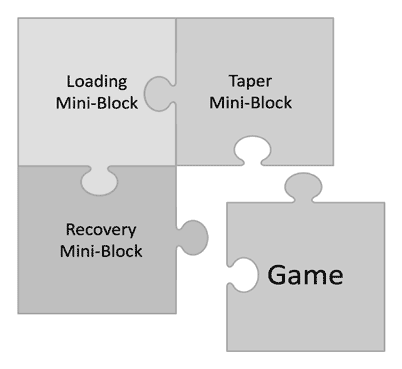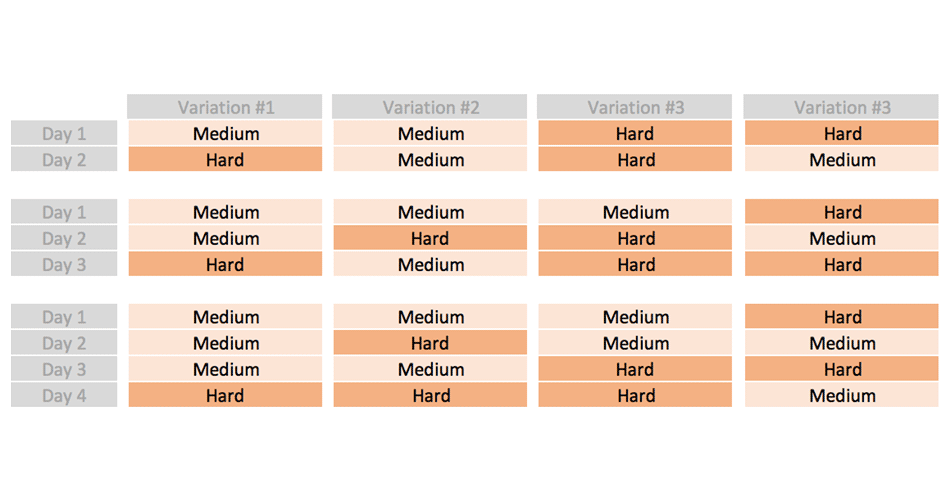HIIT Manual: Example HIIT Programs – Part 2
This is the second and the last part of the articles series about Example HIIT programs. In the first part, I covered the entire Off–season program with examples of the workouts. In the second part I will focus on the Pre–season and In–season HIIT programs.
Pre-Season and In-Season Program
When it comes to team sports planning strategies, I like to utilize two concepts: (1) functional groups and (2) mini-blocks (Jovanović, 2017a; 2017b). It is beyond this manual to go into details regarding planning strategies and the mentioned concepts, but for the sake of example I will provide some clarification.
Functional groups represent teams-within-team that coach needs to take into account and and create separate plans for. Functional groups are mostly related to game availability:

Figure 1. Functional Groups
In ideal world, coaches should provide individual plans, but in real life these four groups are more than enough. Playing Squad is related to athletes who are starting the game and who played more than 60 minutes (which is the usual threshold in soccer to be considered in Playing Squad functional group). Reserves are players who traveled for the game and who are on the official match list (in soccer that is usually 7 athletes – 6 players and 1 goal keeper). Non-travel are athletes who didn’t travel for the game and are available for extra training. Injured are athletes who are in return-to-play (RTP) protocol and demand special attention. Extra group that is usually added is Other, which might include athletes who are away on a break or leave, borrowed to another club or are having national team obligations.
These groups are dynamic and athletes move from these functional groups from game to game. Mini-blocks represent building blocks of the microcycle (which is period between two games):

Figure 2. Mini-Blocks
These mini-blocks are laid in order: (1) recovery mini-block, (2) taper mini-block, and if there is some time left (3) loading mini-block. These are planned for separately for the above functional groups. As already stated, it is beyond this manual to go into more details regarding planning strategies for team sports and interested readers are directed to the following references: (Jovanović, 2017a; 2017b; Mallo & Sanz, 2014; Verheijen, 2014).
The following figure contains the implementation of functional groups and mini-blocks for one ordinary microcycle (Sunday-Sunday game). The outlined Thursday represents day where the likelihood of the most strenuous conditioning will take place.

Figure 3. One ordinary microcycle plan using functional groups and mini-blocks
When it comes to conditioning, the aim is to do most of it with the ball using large-sided, medium-sided, and small-sided games. HIIT conditioning is complementary to these, and if one is equipped with GPS devices, a Top-up approach (complement and phase) to conditioning can be utilized instead.
The example program in this manual is modified by Raymond Verheijen’s program (Verheijen, 2014). Raymond uses an iterative three-phase plan, in which he rotates large-sided, medium-sided, and small-sided games. He also utilizes unload (which is around 50% of load) of the upcoming phase. As stated previously, this helps to smooth out potential spikes in load. Although soccer-specific conditioning is the primary mean for conditioning, complementary HIIT conditioning is added to make sure all important boxes are ticked off all the time:











Responses